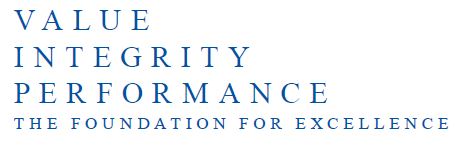1Morgan Stanley research, October 16, 2024. US Reshoring Flame Has Been Lit For $10tn Opportunity.
2Morgan Stanley research, November 7, 2024. Learnings from Trump 1.0, Expectations for 2.0.
3Bernstein Research, November 4, 2024.
4CNBC, July 28, 2024. How The Massive Power Draw Of Generative AI Is Overtaxing Our Grid.
5BCG, September 13, 2023. The Impact of GenAI on Electricity: How GenAI is Fueling the Data Center Boom in the U.S.
6RBC Capital Markets, June 21, 2023.
7RBC Capital Markets Research, January 22, 2025 – RBC Capital Takeaways from Our AI Infrastructure Expert Call Pg.1/8
8Source: Goldman Sachs Research, January 30, 2025, Key Takeaways from Meta and Microsoft results.
9https://blogs.microsoft.com/on-the-issues/2025/01/03/the-golden-opportunity-for-american-ai/
10An estimate of the annual yield an investor would receive if the most recent monthly distribution remained unchanged for the next 12 months, stated as a percentage of the closing market price of the Class A Shares or units on December 31, 2024. Source: LSEG Eikon.
11Returns are for the periods ended December 31, 2024, and are unaudited. The tables show the compound return on the Class A shares of PWI and units of BGIE, for each period indicated. Past performance does not necessarily indicate how the funds will perform in the future. The performance information shown is based on the net asset value per Class A Share or NAV per unit, as applicable, and assumes that distributions made by the funds on their Class A Shares or units during the periods shown were reinvested at net asset value per Class A Share or net asset value per unit in additional Class A Shares or units of the respective fund. Past performance does not necessarily indicate how the funds will perform in the future.
This document is for information purposes only and does not constitute an offer to sell or a solicitation to buy the securities referred to herein. The opinions contained in this report are solely those of Brompton Funds Limited (“BFL”) and are subject to change without notice. BFL makes every effort to ensure that the information has been derived from sources believed to be reliable and accurate. However, BFL assumes no responsibility for any losses or damages, whether direct or indirect which arise from the use of this information. BFL is under no obligation to update the information contained herein. The information should not be regarded as a substitute for the exercise of your own judgment. Please read the prospectus or annual information form before investing.
Commissions, trailing commissions, management fees and expenses all may be associated with exchange-traded fund investments. The indicated rates of return are the historical annual compounded total returns including changes in unit value and reinvestment of all distributions and does not take into account sales, redemption, distribution or optional charges or income tax payable by any securityholder that would have reduced returns. Please read the prospectus before investing. Exchange-traded funds are not guaranteed, their values change frequently and past performance may not be repeated.
You will usually pay brokerage fees to your dealer if you purchase or sell shares of PWI on the Toronto Stock Exchange or other alternative Canadian trading system (an “exchange”). If the shares are purchased or sold on an exchange, investors may pay more than the current net asset value when buying shares of the investment fund and may receive less than the current net asset value when selling them.
There are ongoing fees and expenses with owning shares of an investment fund. An investment fund must prepare disclosure documents that contain key information about the fund. You can find more detailed information about PWI in the public filings available at www.sedarplus.ca. The indicated rates of return are the historical annual compounded total returns including changes in share value and reinvestment of all distributions and do not take into account certain fees such as redemption costs or income taxes payable by any securityholder that would have reduced returns. Investment funds are not guaranteed, their values change frequently and past performance may not be repeated.
Information contained in this document was published at a specific point in time. Upon publication, it is believed to be accurate and reliable, however, we cannot guarantee that it is complete or current at all times. Certain statements contained in this document constitute forward-looking information within the meaning of Canadian securities laws. Forward-looking information may relate to matters disclosed in this document and to other matters identified in public filings relating to the funds, to the future outlook of the funds and anticipated events or results and may include statements regarding the future financial performance of the funds. In some cases, forward-looking information can be identified by terms such as “may”, “will”, “should”, “expect”, “plan”, “anticipate”, “believe”, “intend”, “estimate”, “predict”, “potential”, “continue” or other similar expressions concerning matters that are not historical facts. Actual results may vary from such forward-looking information. Investors should not place undue reliance on forward-looking statements. These forward looking statements are made as of the date hereof and we assume no obligation to update or revise them to reflect new events or circumstances. |









